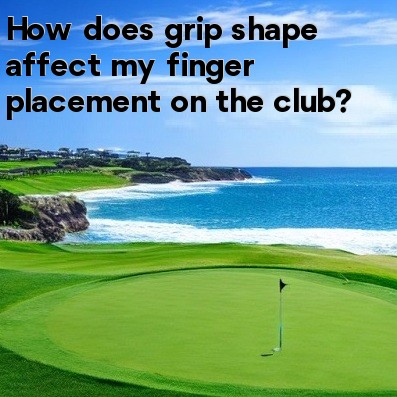
In golf, How does grip shape affect my finger placement on the club?
When gripping a golf club, the shape of your grip can have a significant impact on the placement of your fingers. The grip is one of the most crucial parts of the swing, as it directly affects the control and stability of the club. Let's take a closer look at how the grip shape can influence the positioning of your fingers on the club.
- The overlap grip is one of the most common grip styles used by golfers. With this grip, the pinky finger of the trail hand (right hand for right-handed golfers) rests on top of the index finger of the lead hand (left hand for right-handed golfers). This grip allows for better control and stability during the swing. With an overlap grip, your fingers will naturally rest in a position where the trail hand has more influence and control over the club.
- The interlocking grip is another popular grip style, especially among golfers with smaller hands. With this grip, the pinky finger of the trail hand interlocks with the index finger of the lead hand, creating a more secure connection between the hands. The interlocking grip allows for a tighter hold on the club, reducing the chance of the club slipping during the swing. With an interlocking grip, your fingers will naturally align in a way that evenly distributes the control and influence between the hands.
- The ten-finger grip, also known as the baseball grip, is a grip style commonly used by beginners or golfers with weaker hand strength. With this grip, all ten fingers of both hands are placed directly on the club, creating a unified connection. The ten-finger grip provides maximum support and stability but may limit the range of motion in the hands. With a ten-finger grip, your fingers will rest in a position where both hands have equal control and influence over the club.
The shape of your grip can affect the placement and pressure of your fingers on the club. Depending on the grip style you choose, certain fingers will naturally take up more or less space on the club, which can influence your grip pressure and overall swing dynamics.
For example, with an overlap grip, the trail hand's pinky finger rests on top of the lead hand's index finger. This positioning naturally encourages the trail hand to have a stronger grip and more control over the club. In contrast, with an interlocking grip, the interlocked pinky and index finger create a more unified grip, distributing the control and influence more evenly between the hands.
It's important to experiment with different grip styles and finger placements to find the most comfortable and effective grip for your swing. Each golfer may have slight variations in finger placement based on individual hand size, finger length, and personal preference.
In conclusion, the shape of your grip, whether it's an overlap grip, interlocking grip, or ten-finger grip, can affect the placement and pressure of your fingers on the club. Understanding how your grip influences finger placement is crucial for achieving optimal control, stability, and swing dynamics in golf.





